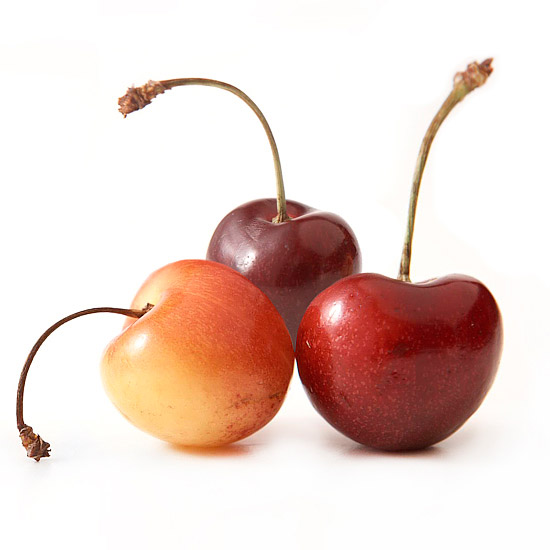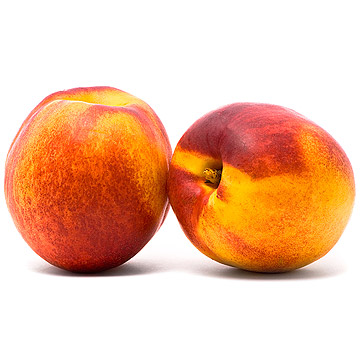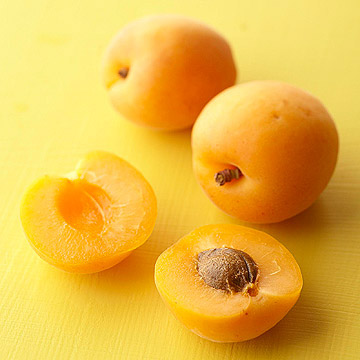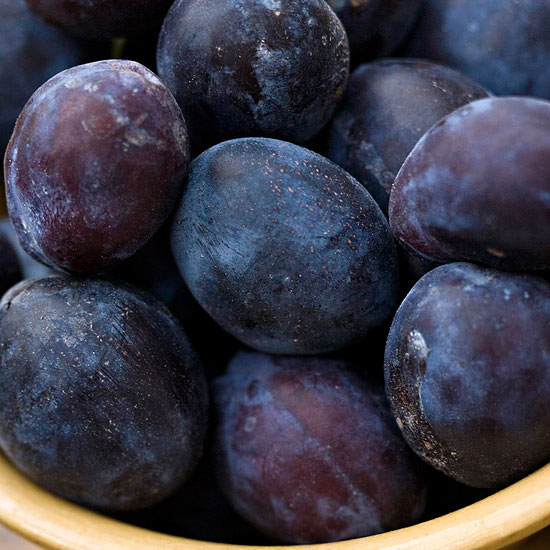
Cherries
Recent research has shown that tart cherries have anti-inflammatory benefits that can ease joint pain. If that's another reason to enjoy a slice of pie, we'll take it!
Buy: Fresh cherries are brightly colored and heavy with smooth skin. Avoid fruit with bruises or brown spots and make sure the stems are intact.
Store: Cherries are harvested at their peak and do not continue to ripen off the tree, so it's best to eat them within the first two days of picking. Buy what you need, rinse with cold water, and store at room temperature for the best flavor.
Prepare: Munch on cherries anytime, but be careful to avoid the pit. Use a cherry pitter to remove the pit before giving cherries to children under 8. (You can also use a small knife to slice the cherry in half and pull out the pit.) Add cherries to punch up cereal, salads, pies, and cobblers.

Peaches
This fuzzy fruit is actually a member of the rose family. A medium sized peach has 17 percent of the vitamin C you need in a day.
Buy: There are two main varieties of peaches at the market: clingstone (the flesh sticks to the pit) and freestone (the flesh separates easily from the pit). Use your senses when picking peaches — the best ones have a sweet smell and feel heavy for their size. Squeeze a peach to gauge its ripeness. A ripe fruit will be tender with some give when ready to eat. Peaches vary in color from almost white to deep red, so contrary to popular belief, brightness is not an indication of ripeness.
Store: Keep peaches at room temperature and wash them when ready to eat. To speed up the ripening process, store peaches in a closed brown paper bag. Alternatively, you can store them in the fridge to slow ripening. Remove pits before freezing.
Prepare: You can simply rinse a peach with cold water and dig in, but peaches are extremely versatile. In addition to their usual appearances in desserts and jams, they brighten up salad, hold up on the grill, and taste great when pureed as an addition to drinks and ice cream. To skin a peach you'll start by blanching the fruit: Drop into boiling water for 20 to 30 seconds. Remove with a slotted spoon and immediately place into a bowl of ice water to stop the cooking. Cut the peach in half and peel the skin away.Nectarines

Nectarines grow on peach trees that have been cultivated to produce fruits with smooth skin. This famously fuzz-free variety is often more popular with kids.
Buy: Just like the peach, ripe nectarines are tender to the touch. Nectarines varieties include yellow and white, and freestone (where the pit can be easily separated) and clingstone (where the flesh of the fruit tends to stick to the pit.) Choose fruit that is heavy for its size and smells sweet.
Store: Keep nectarines at room temperature and wash when ready to eat. To ripen the fruit quickly, store nectarines in a closed brown paper bag. You can also store them in the fridge to slow ripening. Remove pits before freezing.
Prepare: Nectarines can be substituted for peaches in any recipe. Many people keep the smooth skin of the fruit on while baking, but it can be peeled easily by blanching the fruit first. You can bake, grill, puree, or freeze nectarines as you would peaches.
Health Update: 3 Ways to Help Your Baby Love Fruits & Veggies

Apricots
Apricots are the perfect kid-sized summer snack. Unlike peaches, plums, and nectarines, they're not as soft when ripe. This makes them better suited for packing on summer adventures.
Buy: Choose richly colored, golden-orange fruit. Yellow or greenish apricots will not be as flavorful. Apricots are still fairly firm when ripe, so avoid fruits that feel at all mushy.
Store: It's best to store apricots at room temperature. As you would with other stone fruits, add them to a paper bag to accelerate ripening and refrigerate to slow ripening. Remove pits before freezing.
Prepare: Rinse with cold water before eating out of hand or cutting up to add to a recipe. Apricots have a smooth, oval pit that falls out easily when the fruit is cut in half along the seam. Just twist the fruit like an Oreo cookie to separate the halves and remove the pit with your fingers. Enjoy apricots as a bright addition to salads and sandwiches. If you can't find fresh, dried apricots are a good alternative, although they often have added sugar.
Plums

This smaller stone fruit is also a kid-friendly favorite. Plums and prunes (the dried version) are a great defense against constipation.
Buy: Look for smooth, bruise-free skin that's rich in color. The chalky white powder on plums is completely natural — it's called the bloom, and its presence is a sign that a plum hasn't been handled too much from orchard to store. Buy plums that are firm, with a bit of give, and let them ripen on your counter.
Store: Fresh plums, like other stone fruits, are best when stored at room temperature. Adding the fruit to a paper bag will accelerate ripening. Keeping them cool in the fridge will preserve the fruit and slow ripening. Remove the pits before freezing.
Prepare: Plums have a sweet flavor and are easy to add to dishes. They can be baked, poached, grilled, or mashed for jam. If you need to remove the skin, blanch by cooking in boiling water for 20 to 30 seconds. Remove with a slotted spoon and immediately add to a bowl of ice water to stop the cooking. Cut the plum in half and peel off skin.Copyright © 2012 Meredith Corporation.
